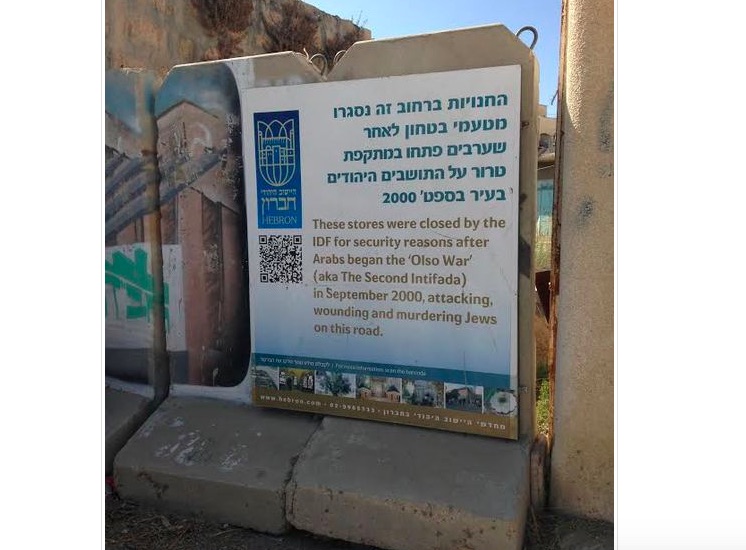DISARMAMENT & SECURITY .
An article by Jamie Stall, Holy Land Trust
Earlier this month, we had the chance to visit Hebron and participate in a city tour with Breaking the Silence, an organization founded by former Israeli combatants who served in the Occupied Territories. The aim of the organization is to raise awareness about the daily realities of those living under occupation and stimulate public discussion of these issues among Israelis.

We started off the tour near Shuhada Street, where we gathered in a hidden room behind a souvenir shop. Our tour guide, Shai, began by giving us a view into his personal experience as an IDF combatant in the West Bank. He recounted several of his experiences for the group, including being ordered to chase a young child while holding a loaded firearm because the kid was playing near a security fence, and searching Palestinian households at random for the purpose of “making the IDF’s presence felt” within the community.
After the introduction, we began walking through an almost entirely deserted “ghost town.” As it turns out, this abandoned street is called Al-Shuhada Street and was the bustling commercial center of Hebron until about 20 years ago. Shay explained that in 1994 all its businesses were closed by the army “for security purposes” following the murder of 29 Muslim worshipers at the Cave of the Patriarchs by the Israeli settler Baruch Goldstein. As we walked down the street, we encountered several placards that told a very different story about the street’s closure. According to the signs, “these stores were closed by the IDF for security reasons after the Arabs began the ‘Oslo War’ [aka The Second Intifada] in September 2000, attacking, wounding and murdering Jews on this road.” A quick fact check proves this to be false as the reason for the street’s closure, not to mention that The Second Intifada began six years after the stores were closed. There is no doubt that the Jewish settler community in Hebron did experience many detestable acts of violence, including several murders, but that does not change the fact that the sign’s claims are nonfactual propaganda meant to mislead its readers and evoke a negative opinion of the city’s Palestinians.
As we continued up Al-Shuhada Street, passing a military base and several settlements, we encountered a pedestrian checkpoint separating the settler communities and a Palestinian commercial area. As we were finishing our tour near the checkpoint, a young Palestinian man began to walk through the checkpoint while singing a song to himself. One of the Israeli soldiers on duty told him “shtok!” (“shut up!”), but he continued walking, singing to himself as before. At this point he was stopped, searched, questioned and prevented from leaving for about ten minutes, all because he was singing.
Seeing and listening to the history and present-day reality of this small slice of Hebron was not easy. Frankly, nothing in Palestine has been easy. There is so much suffering and resentment on both sides of the separation wall that it can put a damper on your hopes for a better future. But hearing courageous testimonies and messages of hope from people like Shai and Breaking the Silence bring some of that hope and optimism back. I’m so appreciative of what they are doing. May there be more people and communities like them, willing to speak out against the occupation and work for truth, peace and reconciliation.